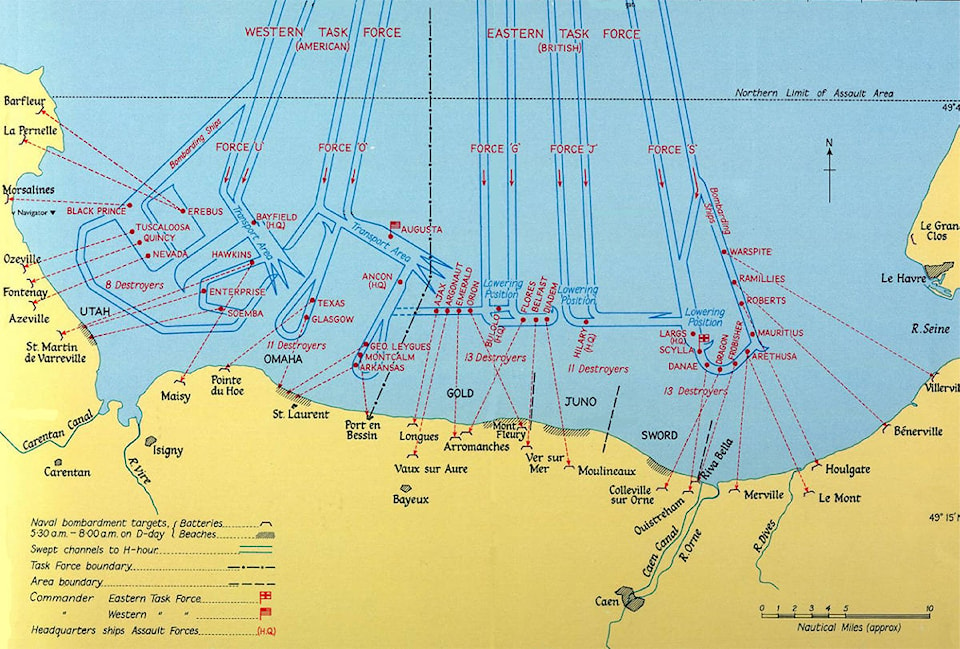By T.W. Paterson
The 75th anniversary of D-Day isn’t just about marking this momentous day in history; D-Day, after all, was just the beginning of the liberation of Europe after five years of German occupation. The Second World War in Europe, with all its horrors, would drag on for almost another year.
But June 6, 1944 was the final turning point; those first crucial hours and days on the Normandy shore known to Canadians as Juno Beach helped to turn the tide of history. Hence, three-quarters of a century later, our fascination with this epochal event.
To mark the diamond jubilee of D-Day the Cowichan Valley Citizen asked historical columnist T.W. Paterson to prepare this special report on how D-Day and its immediate aftermath impacted local families who had loved ones and friends in the front lines: on the beach, in the air and at sea. From local newspaper accounts of the day he has tried to capture what it was like for Valley residents to sit by the radio and to pore over the latest news reports, all the while wondering and worrying about the safety of their fathers, sons and brothers who, they worried, were in the thick of the fighting.
Newscasting has changed dramatically in 75 years; today we can follow the latest developments on our TVs and smartphones as they occur; 75 years ago, strict military censorship prevailed. Until troops actually landed, it must be remembered, the long awaited invasion of France was kept top secret, not just to the Germans but to the folks at home.
T.W. begins by placing D-Day in historical context with the help of The Canadian Encyclopedia:
A stretch of six miles (10km) of Normandy shoreline was Canada’s share of the Allied invasion of France. The men chosen to lead the assault were the Canadian Army’s 3rd Infantry Division and 2nd Armoured Brigade. German resistance was fierce and the Canadians took heavy casualties before, as much thanks to innumerable acts of personal courage as to outstanding planning and leadership, they established a beachhead by day’s end. In total, more than 14,000 Canadian soldiers landed or parachuted into France on D-Day. Casualties were somewhat fewer than expected but dear: 1,074 in total, including 359 killed.
This is the momentous role played by Canadians that we’re most familiar with: the hundreds of landing craft supported by an armada of warships and soldiers storming the beaches. But many other Canadians were involved in the air and at sea: 100 Canadian warships — 10,000 Canadian seamen — and 15 fighter and fighter-bomber Squadrons of the Royal Canadian Air Force.
Among them, soldiers, seamen and airmen from the Cowichan Valley whom we honour today…
